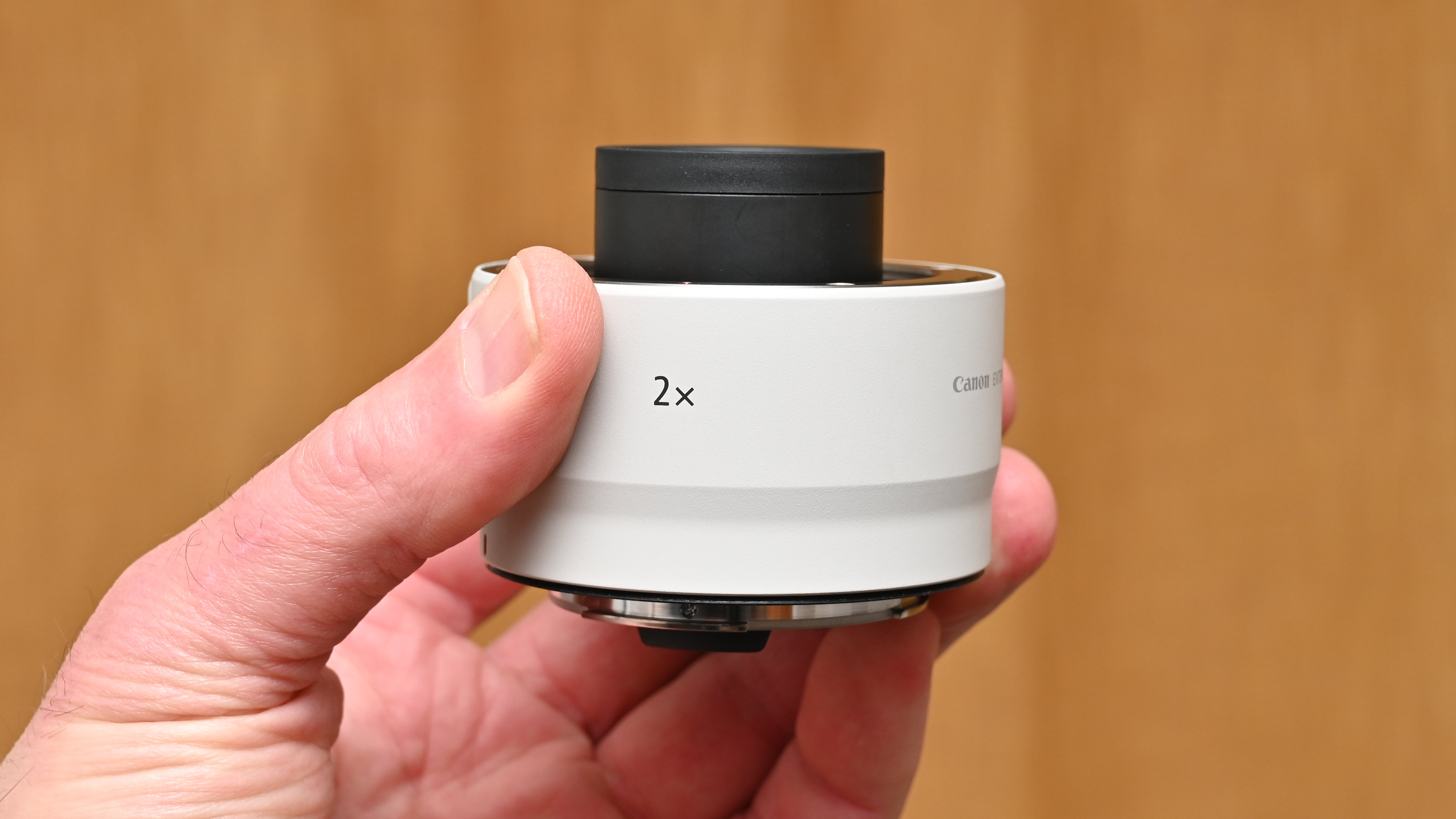
The name is a giveaway and, as you’d expect, the Canon Extender RF 2x is designed for EOS R-system mirrorless Canon cameras and compatible RF-mount Canon telephoto lenses. It therefore builds on the reputation and performance prowess of the latest Canon Extender EF 2x III for DSLRS, which can also be used on EOS R cameras via an EF-EOS R mount adapter. It sets out to be one of the world’s best teleconverters, aimed at professional and enthusiast photographers.

Just like with any 2x teleconverter, the focal length of the attached lens is doubled, with a consequent aperture reduction of two f/stops. As such, a 70-200mm f/2.8 zoom effectively becomes roughly a 100-280mm f/4 lens. That’s actually a sore point as far as I’m concerned. The combination of a ‘trinity’ 70-200mm f/2.8 zoom lens and a teleconverter is one of my go-to setups. While I can understand that Canon wanted to shrink the dimensions and weight of the Canon RF 70-200mm F2.8L IS USM, as well as the ‘slower’ Canon RF 70-200mm F4L IS USM, I find it really frustrating that both of these lenses are completely incompatible with the RF Extender 1.4x and 2x teleconverters, due to a lack of space between the lenses’ rear element and mounting plate.
The reduction of two f/stops is more of an issue on a lens like the Canon RF 100-500mm F4.5-7.1L IS USM, where the widest available aperture towards the long end of the zoom range shrinks to a sluggish f/14 (f/10 with the 1.4x extender). And even then, compatibility is limited as you can only use the teleconverter in the longer 300-500mm sector of the zoom range. On the plus side, there’s full compatibility with a growing range of other RF prime and zoom telephoto lenses, from the Canon RF 100-400mm F5.6-8 IS USM right up to the monster Canon RF 1200mm F8L IS USM.
A less talked-about advantage of a 2x teleconverter is that it also gives you double the magnification factor of the main lens. That’s because the minimum focus distance is generally unchanged. With some telephoto lenses, that can take you into a world of extreme close-ups with useful levels of macro magnification.
Canon Extender RF 2x: Specifications
Canon Extender RF 2x: Price & Availability
Priced at $599 / £719 / AU$999, the Canon Extender RF 2x is one of the most expensive 2x teleconverters on the market but there’s more to it than meets the eye. With its high-spec feature set and pro-grade build quality, you get what you pay for. Also, the rival Nikon Z Teleconverter TC-1.4x is similarly priced in the USA, although the Nikon is comparatively less expensive than the Canon in the UK. The smaller Canon Extender RF 1.4x is less pricey at $499 / £579 / AU$899.
Canon Extender RF 2x: Design & Handling
Primarily designed for press, sports, and wildlife photographers who often need to shoot from a long distance and in all weather conditions, the Canon Extender RF 2x has suitably strong build quality, for robustness and reliability. It features weather seals that combine with those of L-series lenses and is engineered to have good vibrational shock resistance. Also like most L-series telephoto lenses, the teleconverter features a white ‘heat shield’ coating.
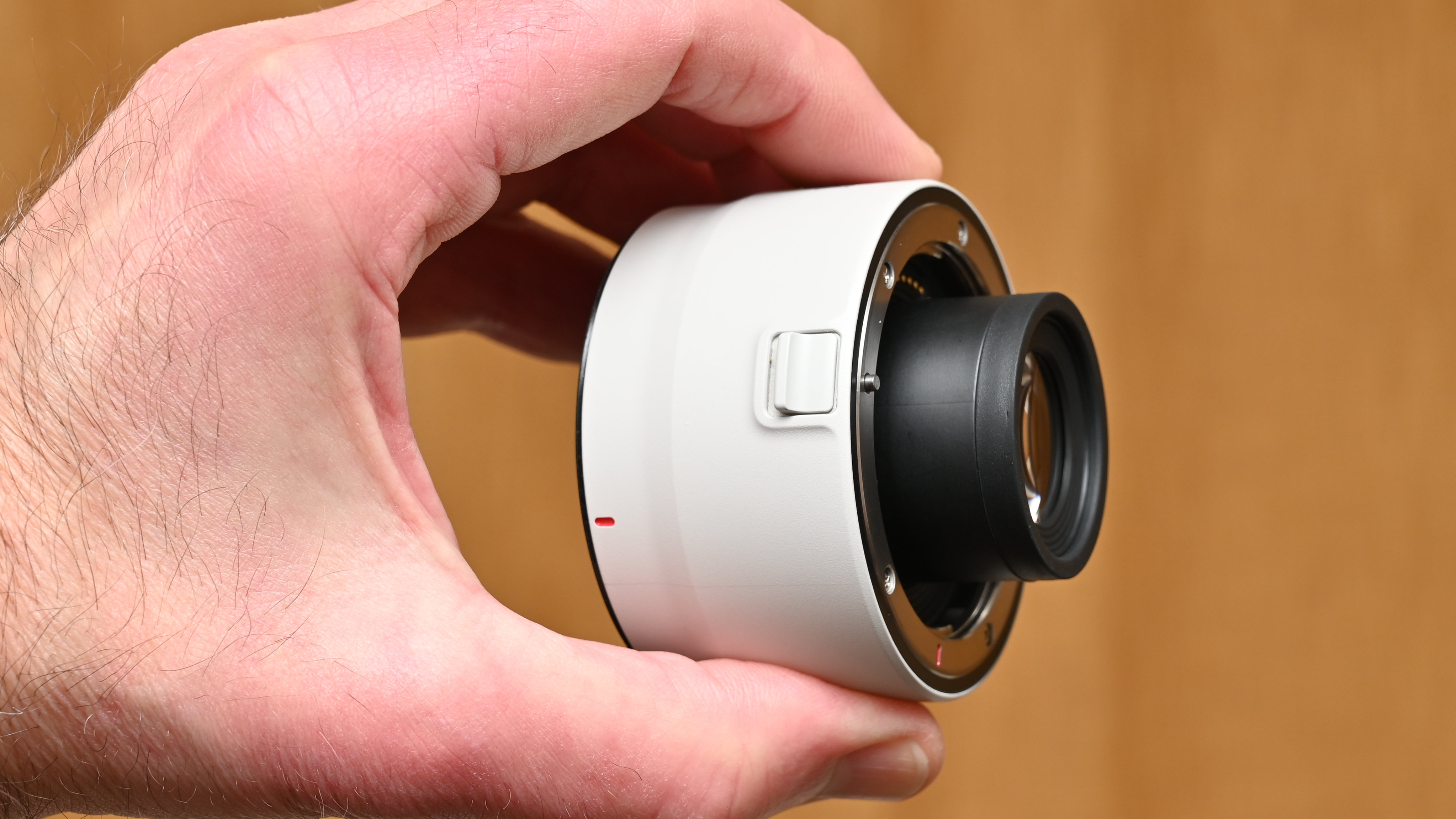
You don’t need me to tell you that high-quality telephoto prime or zoom lens can be fiendishly expensive. And you certainly don’t want to repeat the purchasing exercise for the sake of more telephoto reach. At just over 1.5 inches long and weighing just 340g, the Canon Extender RF 2x doesn’t add much at all to your original telephoto lens with very little gain in size and weight, and is massively cheaper and more convenient than buying and carrying an additional telephoto or super-telephoto lens.

Compared with older Canon DLSRs and EF-mount lenses, the EOS R-system and its native lenses have very much faster data communication between the camera body and lens. Bonuses include the speed and accuracy of autofocus, and the effectiveness of image stabilization. The electronics of the Canon Extender RF 2x are engineered to maintain those advantages when using the teleconverter.

I’d expect high-quality glass in a teleconverter with this kind of price tag, and I’m not disappointed. There’s an impressive array of low-dispersion and high-refractive index glass featured in the lineup of 9 elements, which are arranged in 5 groups. These include a 3-layer combined element and advanced coatings, which work together to minimize flare and ghosting.
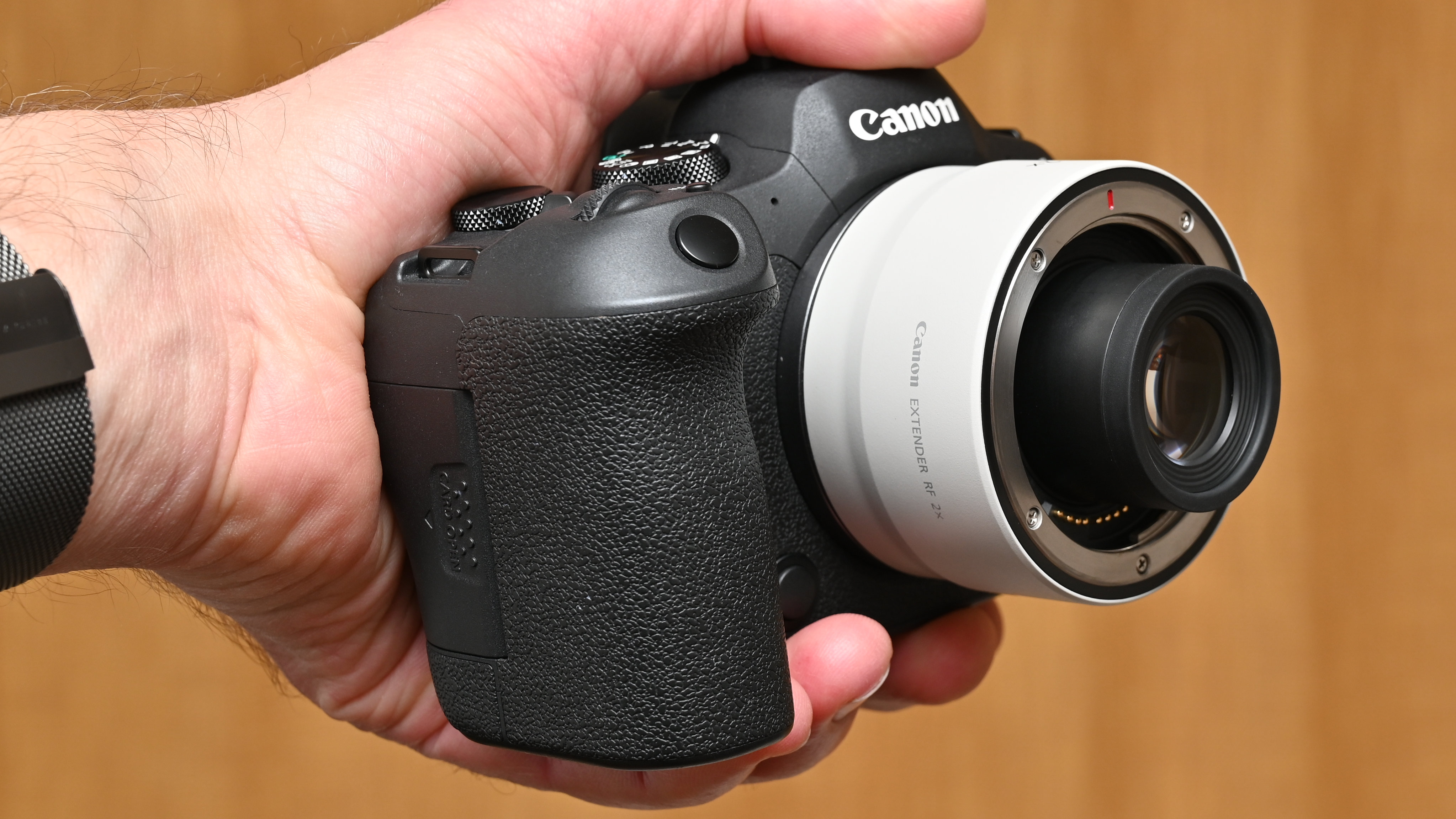
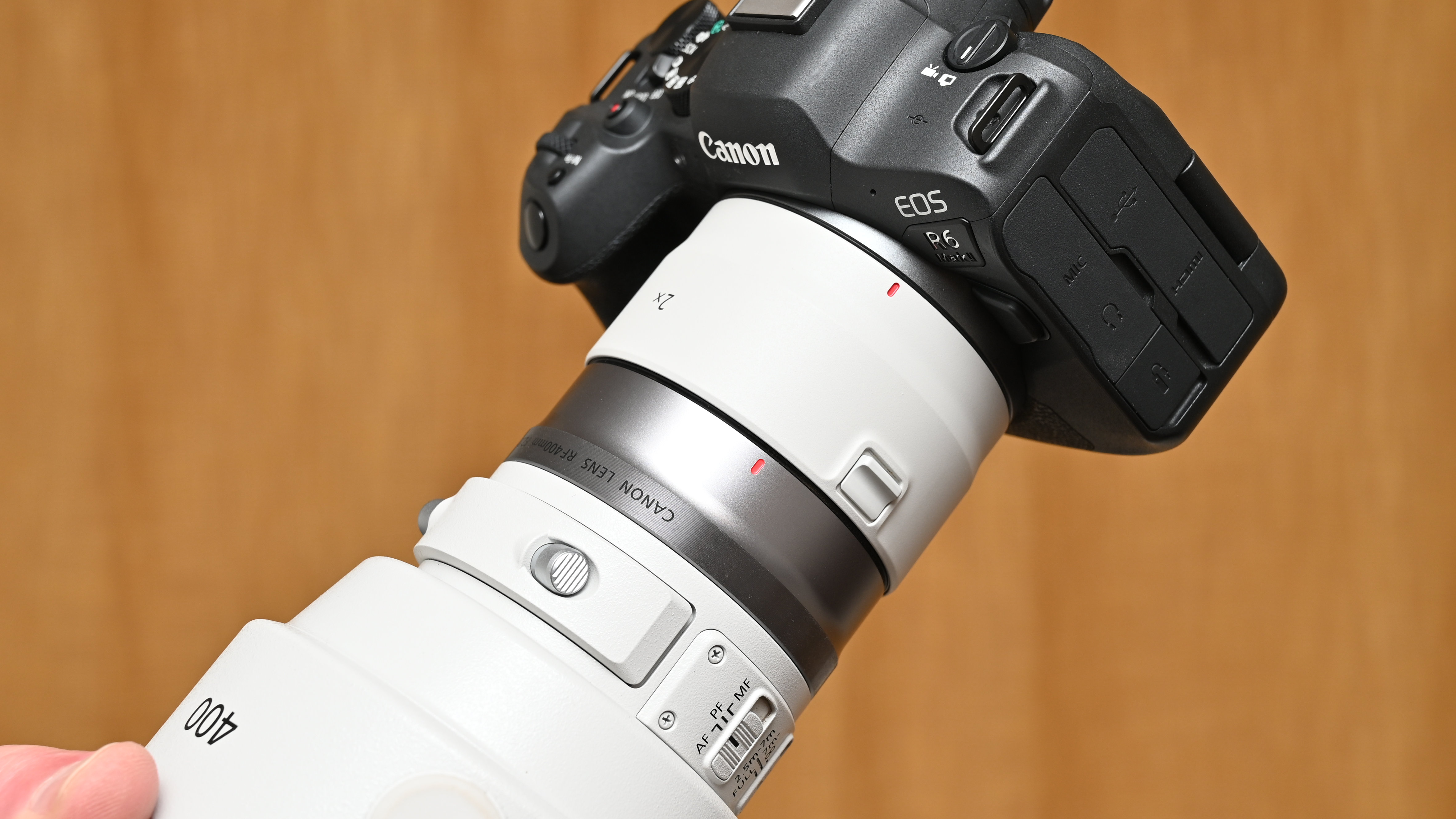
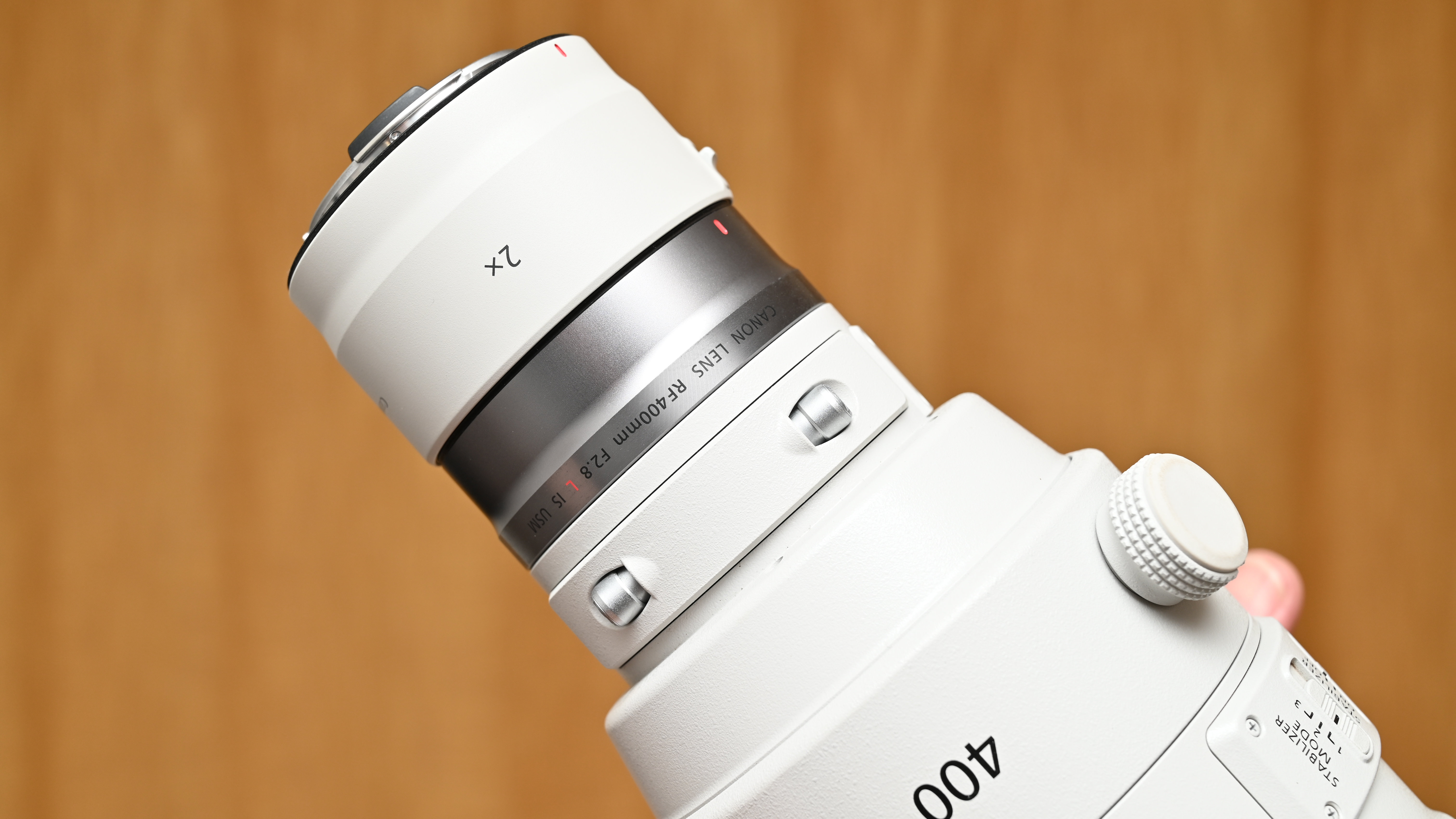
Canon Extender RF 2x: Photo Performance
For testing the Canon Extender RF 2x, I teamed it up with a Canon EOS R6 Mark II camera body and a Canon RF 400mm F2.8L IS USM lens. Teleconverters in general don’t have the best reputation. They’re notorious for degrading the performance of lenses to which they’re attached, to a lesser or greater extent. Side effects can include a slowdown in autofocus speed and a drop in the effectiveness of image stabilization. They can also put a sizeable dent in image quality, with a drop in sharpness and an increase in levels of chromatic aberration.
Taking that into account, I was very impressed by the overall performance of this teleconverter. When in use, autofocus remained super-fast and well-able to track subjects in motion, taking advantage of the advanced subject-tracking abilities of the camera. Optical image stabilization also remained highly effective. As I’d expect, the shutter speed for handheld shooting needed to be twice as fast, given that the focal length was effectively twice as long.
As expected, there’s a slight drop-off in image quality, mostly in terms of sharpness, but the end results are still excellent. Indeed, our lab tests revealed extremely similar results from the 2x teleconverter as from Canon’s RF 1.4x teleconverter. That’s quite an achievement, considering the additional challenge of the extra magnification.
Canon Extender RF 2x: Sample Images
For the sake of comparison, the following gallery includes a series of shots taken with a Canon EOS R6 Mark II and a Canon RF 400mm f/2.8L IS III USM on its own, as well as with both a Canon Extender RF 1.4x and a Canon Extender RF 2x. This shows differences between using the lens natively, as well as with the 1.4x and 2x teleconverters.
The first sequence was taken from a viewpoint overlooking the city of Bath, UK, from a distance of half a mile, on an overcast morning. Due to deteriorating weather conditions with strong winds and heavy rain, the subsequent shots were taken indoors under studio flash lighting.
All of the example images were taken using a sturdy tripod and exposure delay mode and shot several times to ensure the consistency of results. As per our usual testing regime, all of these images were taken in addition to the lab-test shots that we captured, based on the use of official test charts.















Canon Extender RF 2x: Lab Results
We run a range of lab tests under controlled conditions, using the Imatest Master testing suite. Photos of test charts are taken across the range of apertures and zooms (where available), and then analyzed for sharpness, distortion, and chromatic aberrations.
We use Imatest SFR (spatial frequency response) charts and analysis software to plot lens resolution at the center of the image frame, corners, and mid-point distances, across the range of aperture settings and, with zoom lenses, at four different focal lengths. The tests also measure distortion and color fringing (chromatic aberration).
Sharpness:
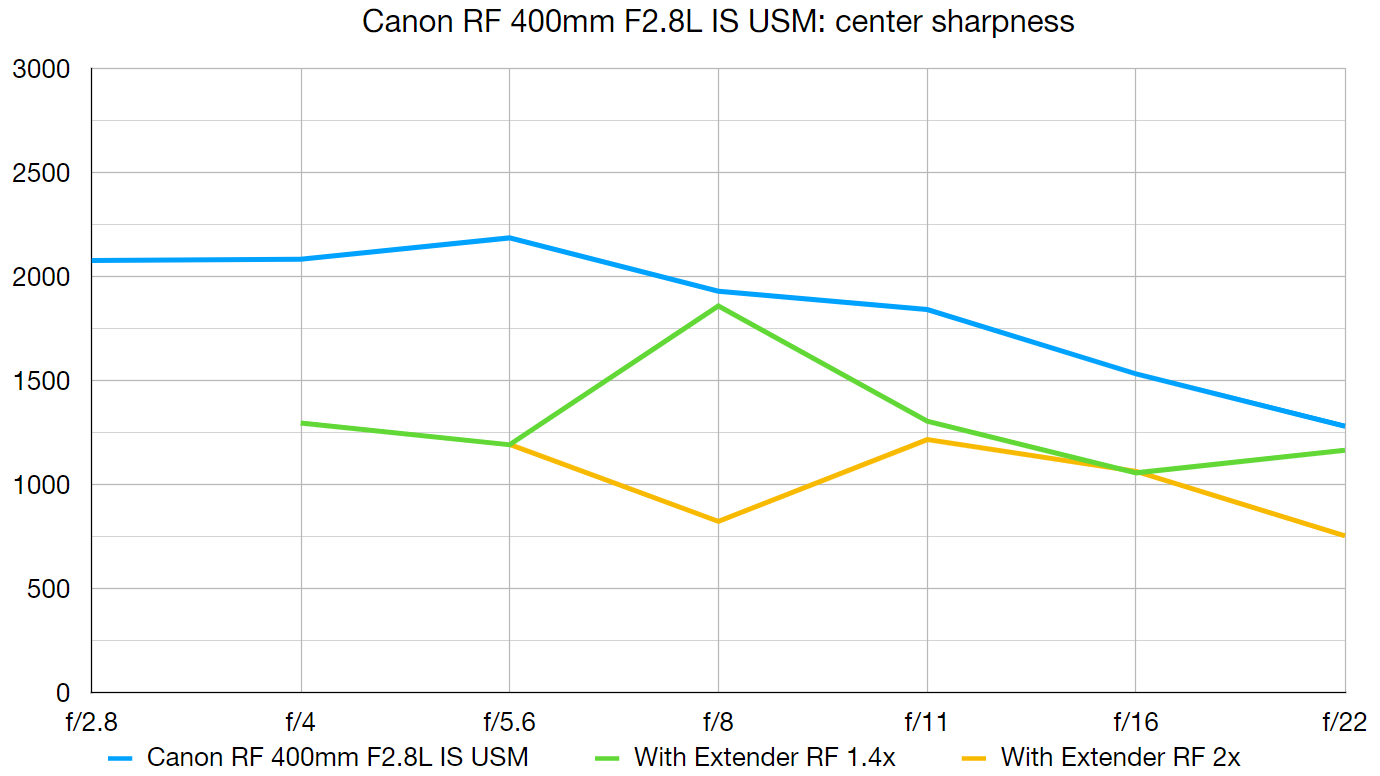
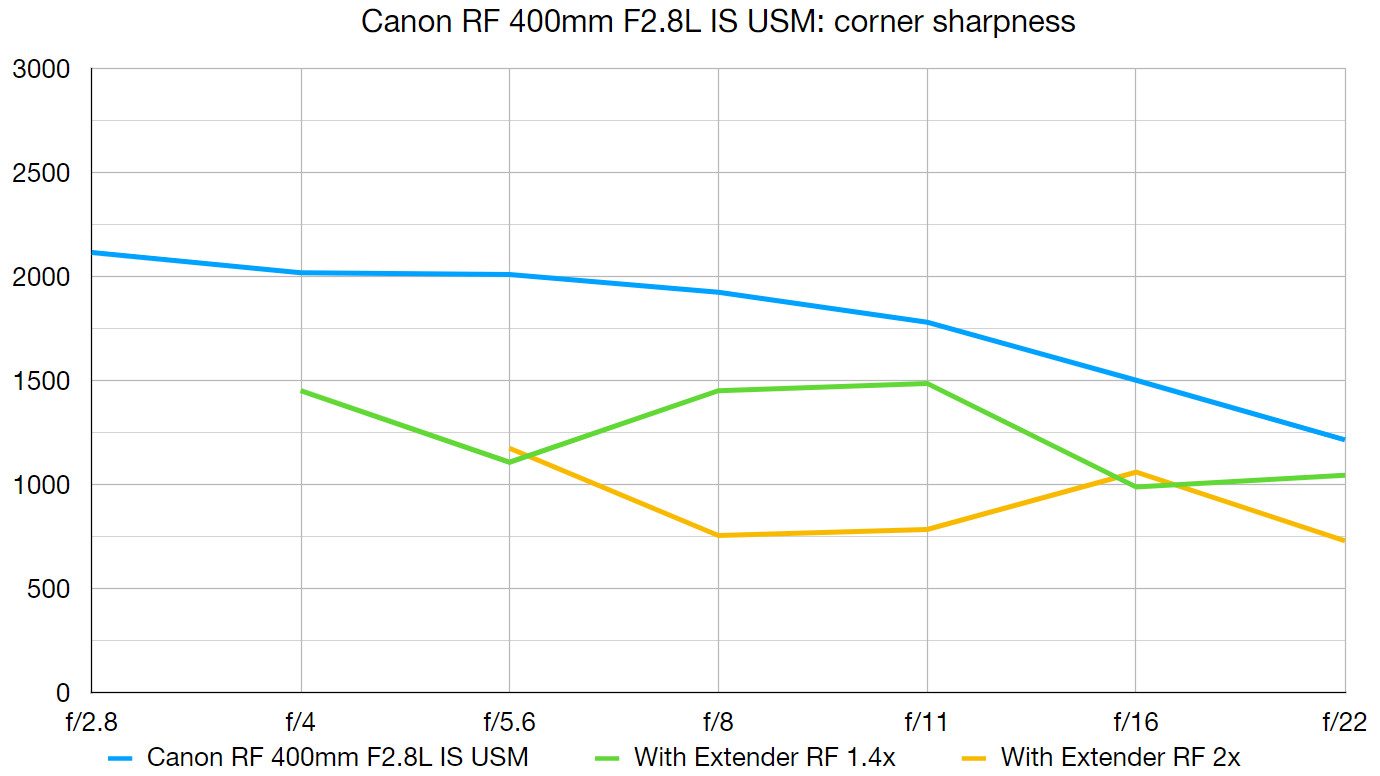
With the 400mm lens, lab tests are quite a stretch for an 800mm focal length when using a 2x teleconverter. The results are very similar to using the less powerful RF 1.4x teleconverter and, as with that one, I was very impressed with the retention of sharpness in real-world shooting conditions.
Fringing:

Again, the increase in color fringing is of the same order as with the RF 1.4x teleconverter. It’s quite minimal and can be taken out of the equation by automatic in-camera correction.
Distortion: -0.4
Compared with the slight pincushion distortion when using the RF 400mm on its own, there’s a similar amount of barrel distortion when adding the 2x teleconverter. Again, automatic in-camera correction is available.
Canon Extender RF 2x: Verdict
I’m impressed that the Canon Extender RF 1.4x delivers excellent performance and maintains so much of the goodness of the main lens in terms of image quality. I love that it’s so compact and lightweight and that, when I need more telephoto reach, it’s only a fraction of the price of buying an additional super-telephoto lens. For me though, my ideal pairing would be this teleconverter with the Canon RF 70-200mm F2.8L IS USM, but they’re simply not compatible.

Should you buy the Canon Extender RF 2x?
✅ Buy this...
- 2x telephoto boost
- Robust build quality
- Excellent performance
🚫 Don't buy this...
- Incompatible with some lenses
- Pricey for a 2x teleconverter
- 2 f/stops of aperture reduction







